Yen Bai - From rice - a familiar ingredient - Yen Bai people have cleverly created products that are both imbued with identity, preserving tradition and opening up opportunities for economic development, enriching the value of rice, contributing to bringing highland rice far and wide.
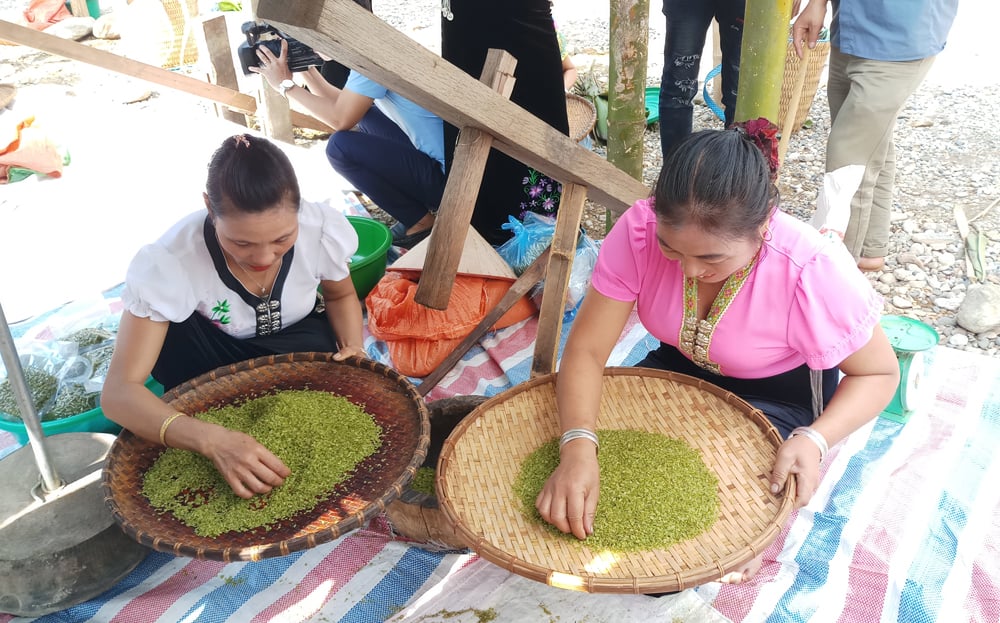 |
People of Tu Le commune, Van Chan district make green rice flakes. |
Following a group of tourists to Muong Lo - the second largest rice granary in the Northwest, everyone was amazed by the rustic beauty of the lush green rice fields stretching far and wide. Nourished by the cool stream, the rice grains here are plump, fragrant, and have a unique, unforgettable flavor. From these rice grains, the people of Muong Lo have created dishes and cakes such as five-color sticky rice and black square sticky rice.
Tourist Nguyen Duc Vinh from Nghe An province said: "During our 3-day stay in Muong Lo, every day at the dinner table we enjoyed dishes cooked by the local Thai people, delicately presented. The five-color sticky rice with 5 colors of white, red, green, purple, yellow is made from leaves and roots of forest trees, very eye-catching and impressive. The sweet and fragrant flavor of the five-color sticky rice mixed with grilled meat marinated with spicy and spicy mac khen spice is truly a fascinating culinary experience."
Not only Muong Lo, in many other localities in the province, people have transformed rice grains into processed products with high added value. In Tu Le commune, Van Chan district, products such as Tu Le green rice flakes and Khau Hang have become specialties of this highland area. Green rice flakes here are still produced to preserve the essence of traditional methods.
The rice must be harvested early in the morning, then soaked in cold water to remove the broken grains. The rice used to make green rice flakes must be in the curling stage, the grain tip still has a little milk, the shell is slightly blue-yellow, the rice is not fully cooked, and must be processed the same day after harvest. After removing the broken grains, the rice is roasted in a large pan. The fire must be maintained evenly for about 30 minutes until the grains crack and give off a fragrant aroma.
According to Thai people, this is an important step that determines the deliciousness of the green rice because if it is overcooked, it will be hard, if it is undercooked, it will lose its elasticity. After roasting, the rice is left to cool and then pounded in a stone mortar. Nowadays, after being produced by the traditional method, Tu Le green rice is vacuum-sealed in the freezer, helping the product maintain its characteristic flavor, making it easy to buy as a gift and preserve for a long time.
Ms. Ha Thi Sy, who has been involved in making green rice flakes for many years in Nuoc Nong village, Tu Le commune, shared: "Before vacuuming, customers only bought a little to eat right away. Now, applying traditional production methods and modern preservation, tourists buy a lot. Almost every group of tourists coming to Tu Le during the green rice season buys a few kilos as gifts. Many groups of tourists also enjoy participating in the experience of making green rice flakes."
Along with the above products, other processed products such as crispy fried dough sticks and fragrant longan cakes of Tu Le people, Van Chan district; sticky rice cakes of Mong people in localities in the province; brown rice vermicelli of Yen Thai commune, Van Yen district are also gradually asserting their position in the market.
The diversity in processing methods has expanded the consumer market, helping to spread the traditional culinary culture of Yen Bai to all regions. In addition, to make products processed from rice more successful and reach further, localities, departments and functional agencies in the province have built a system of close connection between production and consumption.
Rice products are distributed through modern channels such as supermarkets, clean food stores, e-commerce platforms, expanding their reach to large markets. In particular, trade promotion programs, food fairs, tourism events associated with rice such as Mu Cang Chai New Rice Festival, Tu Le Green Rice Festival, Dong Cuong Temple New Rice Festival, etc., organized by authorities at all levels, have contributed to widely promoting the image of Yen Bai highland rice.
Thanks to the combination of tradition and modernity, creativity, Yen Bai highland rice has multiplied its value in the flavor of each product. The flavor of each product has become a bridge to bring the beauty of highland cuisine to tourists from all over the world, opening up many new prospects, contributing to creating a solid step forward for the agricultural economy and preserving cultural heritage.
Le Thuong
Source: http://baoyenbai.com.vn/12/347738/Nhan-len-gia-tri-hat-gao-vung-cao.aspx


![[Photo] General Secretary concludes visit to Azerbaijan, departs for visit to Russian Federation](https://vphoto.vietnam.vn/thumb/1200x675/vietnam/resource/IMAGE/2025/5/8/7a135ad280314b66917ad278ce0e26fa)
![[Photo] National Assembly Chairman Tran Thanh Man chairs the meeting of the Subcommittee on Documents of the First National Assembly Party Congress](https://vphoto.vietnam.vn/thumb/1200x675/vietnam/resource/IMAGE/2025/5/8/72b19a73d94a4affab411fd8c87f4f8d)
![[Photo] President Luong Cuong presents the decision to appoint Deputy Head of the Office of the President](https://vphoto.vietnam.vn/thumb/1200x675/vietnam/resource/IMAGE/2025/5/8/501f8ee192f3476ab9f7579c57b423ad)
![[Photo] General Secretary To Lam begins official visit to Russia and attends the 80th Anniversary of Victory over Fascism](https://vphoto.vietnam.vn/thumb/1200x675/vietnam/resource/IMAGE/2025/5/8/5d2566d7f67d4a1e9b88bc677831ec9d)
![[Photo] Prime Minister Pham Minh Chinh meets with the Policy Advisory Council on Private Economic Development](https://vphoto.vietnam.vn/thumb/1200x675/vietnam/resource/IMAGE/2025/5/8/387da60b85cc489ab2aed8442fc3b14a)




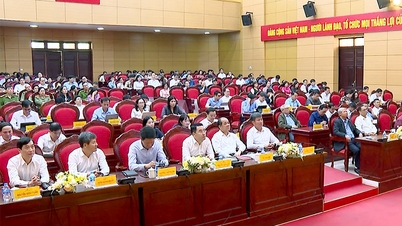
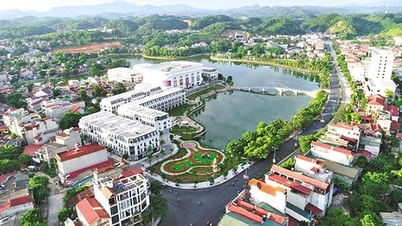

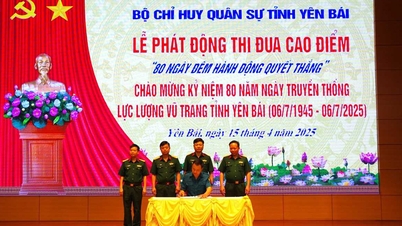
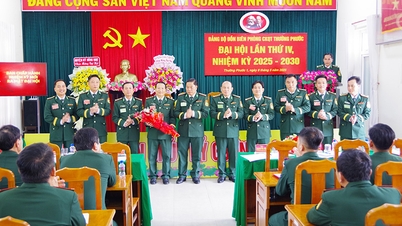

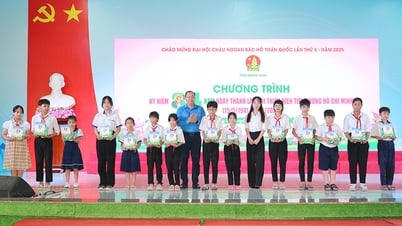
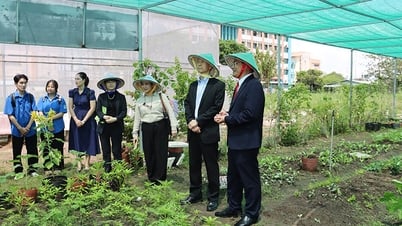






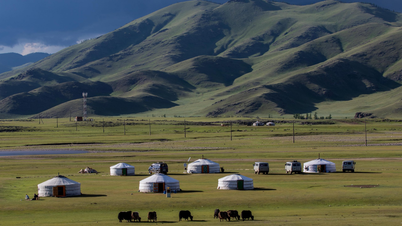
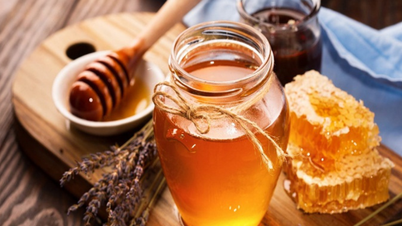



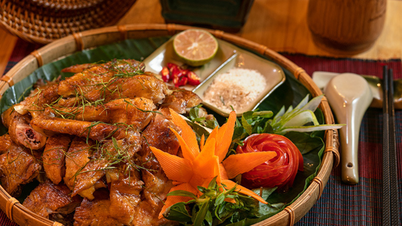

































![[Photo] Prime Minister Pham Minh Chinh talks on the phone with Singaporean Prime Minister Lawrence Wong](https://vphoto.vietnam.vn/thumb/402x226/vietnam/resource/IMAGE/2025/5/8/e2eab082d9bc4fc4a360b28fa0ab94de)






























Comment (0)